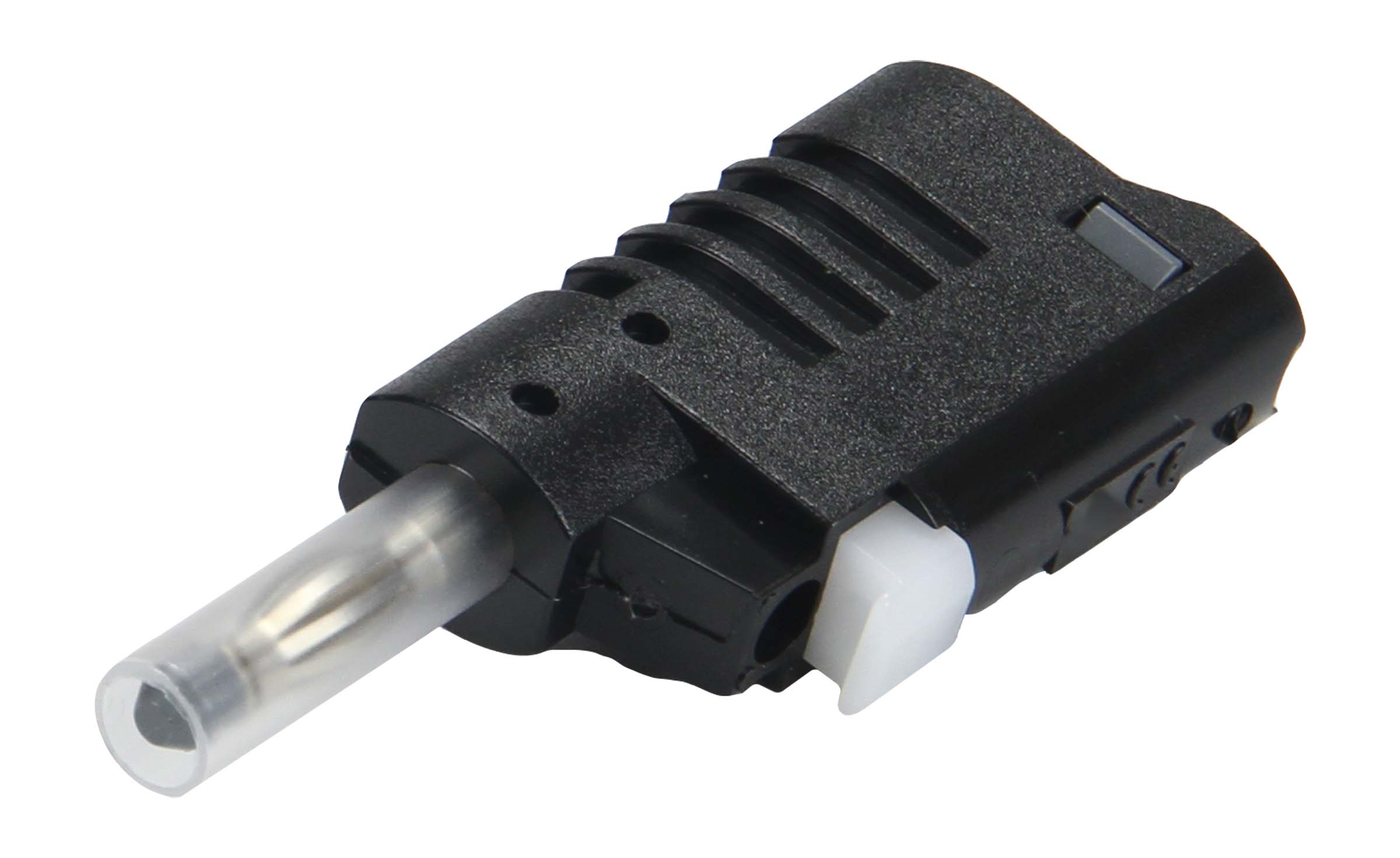

If running longer length speaker wire to deliver all the signal to the speakers then even up to 12 gauge wlre can be used but for about up to 50 feet of wire - 16 guage is big enough. Because amps give off sort of AC voltage and not are DC voltage like a phone-connection wire ran in the house up from the basement and smaller in gauge.
#RADIO SHACK BANANA PLUG PROFESSIONAL#
On older usually professional equipment banana plugs used to be used where you screw the wire into the ends of the banana plug and tighten up the usually tinned wire (so it does not unravel) on the post where the screw is tightened by a screwdriver and tightens the wire up so it does not come lose on the connector. usually bare wire maybe tinned (soldered ends) can be used and again on the speaker (if a stereo speaker) where you run the speaker wire (usually at least 16 gauge instead of 18 gauge like a regular type electrical cord without the ends on it). Usually a type of prong connector is used unless the stereo amp or equipment provides another type of connection. That was all addressed in the previous post so I should be good there.There are different ways to hook up speakers from a say - stereo amp. From there I'll be running both output channels to drive two stage monitors. The adapter is just like this one except I cut off the 1/4" male plugs and am soldering on individual banana plugs then connecting my 1/4" 16 gauge speaker cable into the female 1/4' end of the adapter: 2 As for the splitting of the signal, I am running one input from the mixer into the amp. Hoping this works okay after I solder such fine wire into place. The banana plugs I have accept 12 gauge stranded speaker wire for like a home audio system. Probably something like 24-28 gauge.really fine. The problem with this setup is that the wires coming out of the 1/4" female adapter I'm using to split the signal is really fine. The Hafler P1500 has 5-way binding posts, so it does take banana plugs for speaker outputs. As those terminals are loosened, you'll notice a hole in the stud on the amp where you insert the wire and then tighten down the nut. Also verify that what may look like a banana terminal on the amp, may just be a "binding post" studs. The bannanas come usually with a "set screw" through the top end to secure the wire through a hole in the side. Whether your just putting the bannana ends on the speaker cables themselves, or using the 1/4 female with the wires allready attached.The bannanas are readily available usually with two bannana males moulded together. Simlpe job, however let's back up to the basics. Ron Balsom wrote on Fri, 19 June 2009 22:47 Ron Balsom HPCC Casper, Wyoming cell 3 Blessings Write back if there's a question about multible speakers on a fixed ohm load. Now did I read about this amp on earlier posts concerning the ohm loading to additional speakers? Is this amp unit with two individual amps or is it just one amp output? Nevertheless, just wanted you to be clear on the proper wiring of the outputs. And of coarse the sleeve to the negetive of the amp. The end result is that the tip of your speaker cable should be connected to the positive ( or Red ) output of the amp.

Also varify that what may look like a bannana terminal on the amp, may just be a "bindind post" studs.


 0 kommentar(er)
0 kommentar(er)
